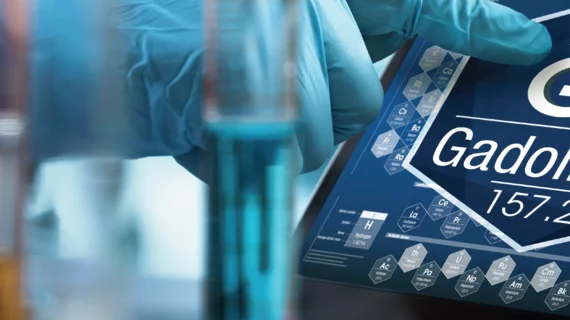GBCA dose reduced by up to 80% with help from deep learning-based image reconstruction
With the help of artificial intelligence-synthesized images, researchers have found a way to significantly decrease the amount of gadolinium-based contrast media required to obtain diagnostic quality brain MRI exams.
In fact, deep learning image reconstruction techniques enable a GBCA dose reduction of up to 80% without sacrificing image quality, according to new work published in Academic Radiology.
Although GBCAs are largely considered safe, there are concerns about how gadolinium retention could affect patients who require repeated imaging. As such, significant research has been dedicated to finding ways to minimize the necessary dosage of GBCAs.
“Following several reports of gadolinium retention, the European Medicines Agency has restricted linear contrast agents since 2017. Moreover, the US Food and Drug Administration, Canada, Australia, and other countries have issued warnings and safety measures regarding gadolinium usage,” corresponding author Mohammad Ghasemi Rad, MD, from the Department of Radiology at Baylor College of Medicine, and colleagues noted. “Accordingly, there is a clinical necessity to reduce GBCA administration to mitigate environmental burdens, health care costs, and potential long-term health risks.”
For the study, experts first acquired pre-contrast, low-dose, and standard dose post-contrast T1w sequences of the brain. They then utilized a deep learning network to create synthesized full dose contrast-enhanced T1w images using the initial sequences. Both sets of images were assessed by three neuroradiologists.
The DL images were obtained using around 20% of the standard dose. Blinded readers scored each set of images similarly, with no significant differences in quality noted. However, the image SNR and vessel conspicuity scores were higher for the DL images, and measures of border delineation, internal morphology and contrast enhancement for the DL images were noninferior to the images acquired using standard GBCA doses.
“In the majority of cases, there was no preference between images as selected by radiologists, however the percentage of preference for DL-T1w images was higher than that for full-dose-T1w images. This preference could be attributed to the improved delineation and contrast enhancement observed in DL-reconstructed images, potentially leading to better visualization of both normal structures and lesions," the authors explained.
The group suggested that DL reconstruction techniques represent a promising alternative to contrast agents that have higher gadolinium concentrations. Although they do believe their technique holds generalizability, it could be further improved in future research using larger and more diverse sample sizes.
The study abstract is available here.

